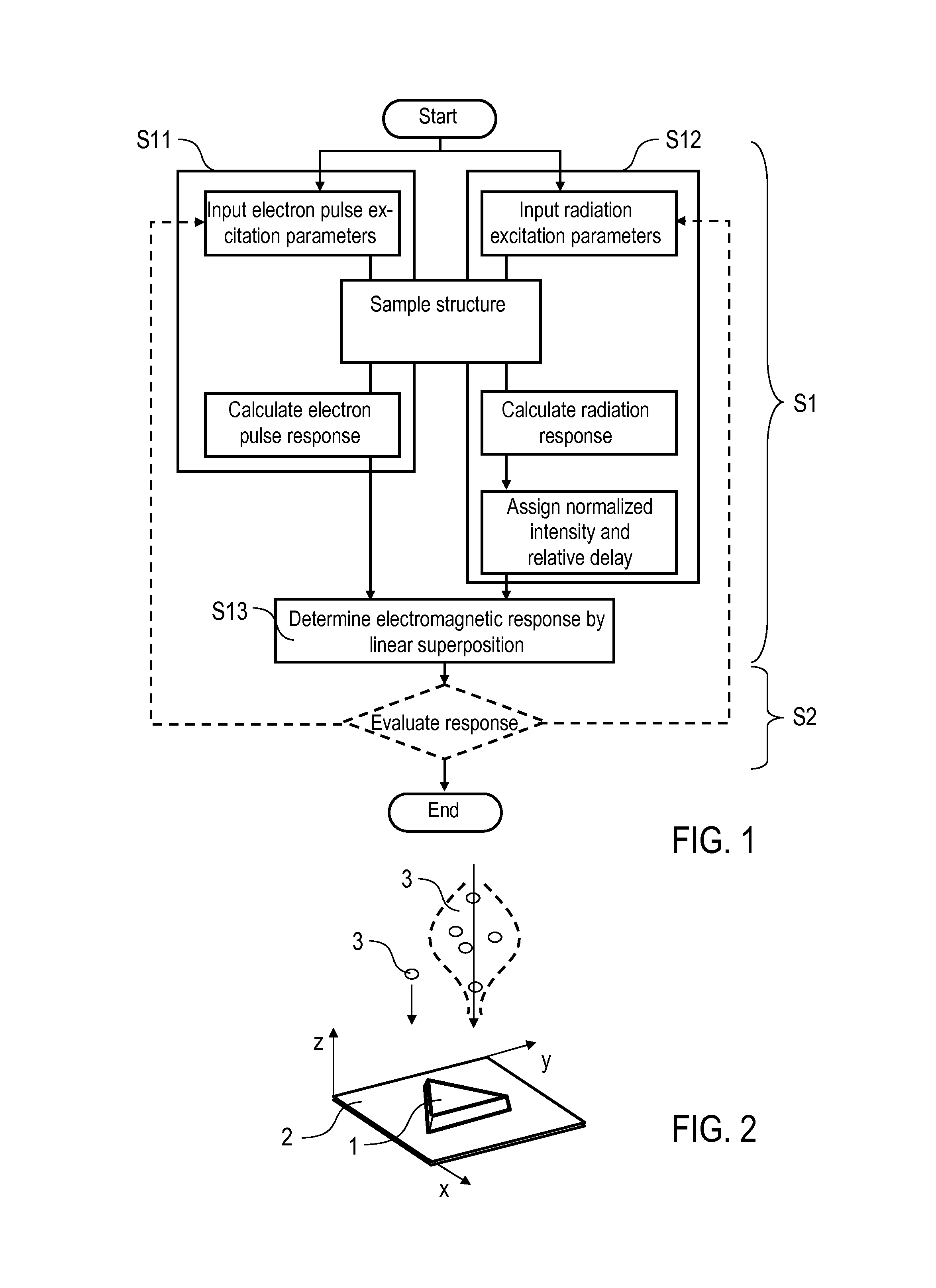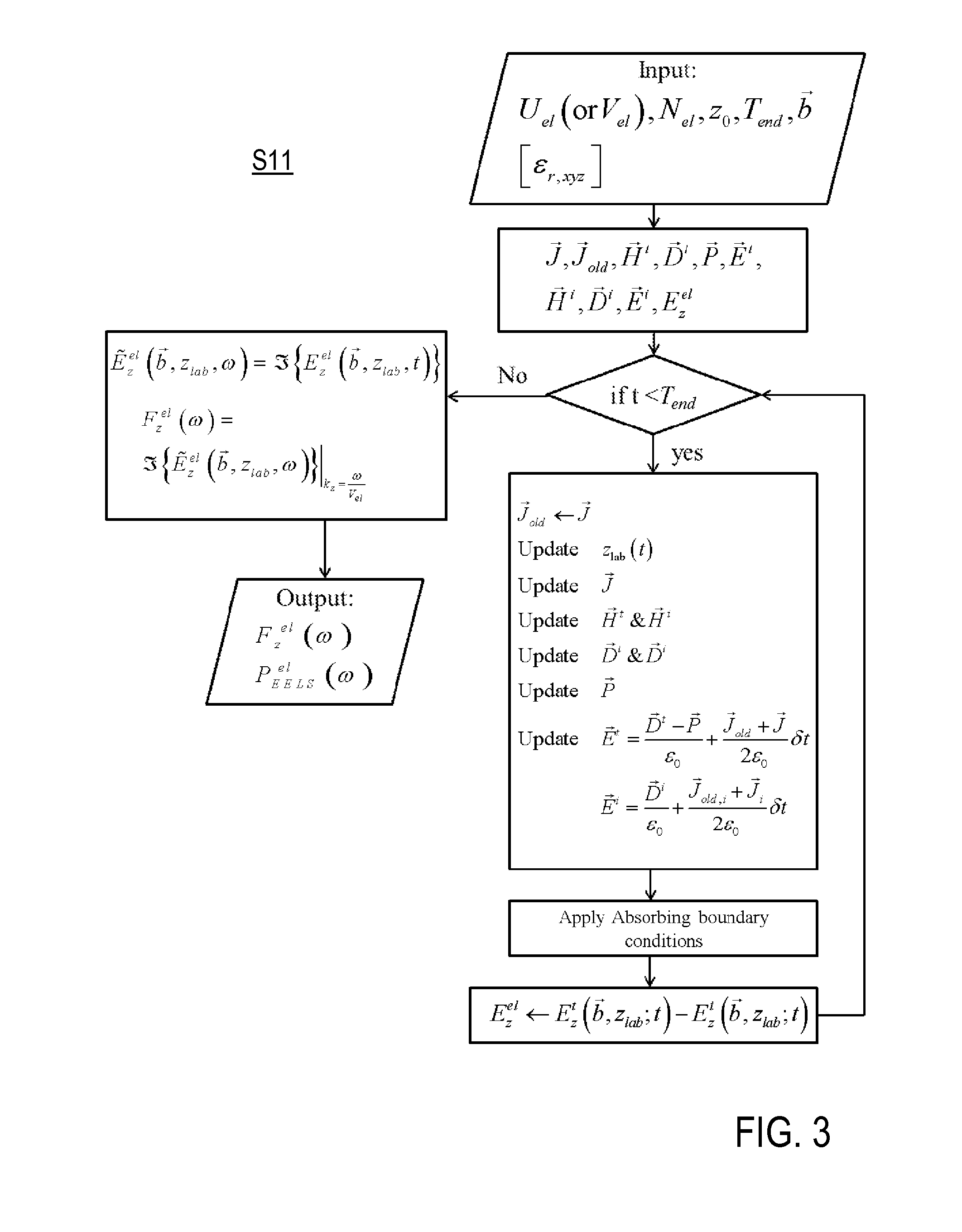Determining an electromagnetic response of a sample
a sample and electromagnetic response technology, applied in the direction of material analysis, material analysis using wave/particle radiation, instruments, etc., can solve the problems of inability to model electron pulses, neglected field due to electrons themselves, and inability to insert substrates and electrically large structures, etc., to achieve the effect of avoiding time-consuming search, facilitating the adjustment of optimized input parameters of practical measurement, and avoiding optimizing input parameters during measuremen
- Summary
- Abstract
- Description
- Claims
- Application Information
AI Technical Summary
Benefits of technology
Problems solved by technology
Method used
Image
Examples
Embodiment Construction
[0057]Features of preferred embodiments of the invention are described here with particular reference to the mathematical background of the inventive methods. The practical implementation of the inventive methods can be obtained with commercial software, like e.g. Agilent EEsof EDA's electromagnetic Professional, Lumerical FDTD solutions, or OptiFDTD, running on computing circuits. Details of the measuring apparatus and the operation thereof are not described as far as they are known from prior art techniques, e.g. from conventional electron microscopes.
[0058]FIG. 1 schematically illustrates a method (S1) of determining an electromagnetic response of a sample structure 1 according to the invention. The method S1 includes two calculations S11 and S12 for calculating responses of the sample structure 1 to electron and radiation excitations, resp. With calculation S11, electron pulse excitation parameters (S111) and sample structure features (S112), including geometric features, permit...
PUM
 Login to View More
Login to View More Abstract
Description
Claims
Application Information
 Login to View More
Login to View More - R&D
- Intellectual Property
- Life Sciences
- Materials
- Tech Scout
- Unparalleled Data Quality
- Higher Quality Content
- 60% Fewer Hallucinations
Browse by: Latest US Patents, China's latest patents, Technical Efficacy Thesaurus, Application Domain, Technology Topic, Popular Technical Reports.
© 2025 PatSnap. All rights reserved.Legal|Privacy policy|Modern Slavery Act Transparency Statement|Sitemap|About US| Contact US: help@patsnap.com



